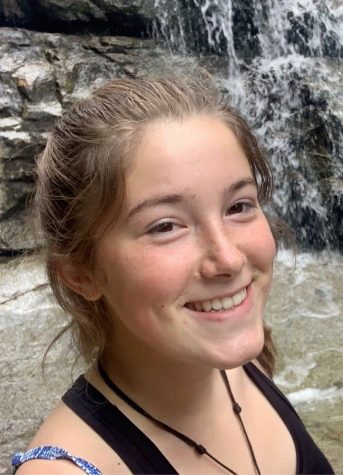The History of the Pacific Salmon
June 14, 2021
Living in the northwest, you have probably seen or at least heard of the Pacific salmon. Their contribution to the northwest’s food chain and people’s love to catch and eat them, have made them a trademark of our state. I am sure when you picture a salmon, you picture the bright red colors of the sockeye during mating season. With its evergreen head and tail and brightly lit maroon body, the sockeye is hard to miss. However there are four other highly notable species of salmon that can be found here. The Chinook, also known as the King, is the largest of the Pacific salmon and “average[s]… 10 to 50 lb… but may reach… 130 lb” (Just Fun Facts). The Chum, during mating season, can be recognized by the flame-like pattern on its belly. The Pink salmon, acquiring its name from the pink tint it gets during mating season, has the largest hump out of all the pacific salmon. Lastly, the Coho salmon, known for the pronounced hook on its nose. All five of these salmon species have played an important role in the history of this state. “For the indigenous people of the Pacific Rim, salmon are a primary source of protein and also a part of their culture” (WWF). For example, the Coho salmon is a symbol of many northwest tribes, representing life and sustenance. Priscilla Long says it best in the Smithsonian Magazine, “salmon… are iconic of wildlife, of indigenous Northwest lifestyles, of the streams they spawn in, of the ocean they spend half their lives in.”
According to The Pacific Salmon Foundation, Pacific salmon are anadromous, meaning “they start in freshwater… migrate to the ocean, then return home to spawn and die.” The anadromous lifestyle of a salmon is very important, allowing the nutrients salmon obtain in the ocean to be redispersed in freshwater rivers. Salmon, in order to fully mature, go through many stages in their lifecycle. According to TheNational Park Service, these stages, “[t]hough [they] var[y] among the five species of Pacific salmon… [are] hatch, migrate, spawn, die.” Female salmon, in order to lay their eggs, must select a redd and build their nests. A redd, as defined by Friends of the Issaquah Salmon Hatchery, “is the general location selected by a female for laying eggs.” Once she selects her redd and builds her nests, she will lay her eggs. As many as 1,200 eggs will be pulled downward into the nest. The male will then fertilize her eggs and she will close the nest. Once the eggs hatch, alevins emerge. Only when these alevins become frys due salmon begin their migration to the ocean. During this migration, frys will become parrs and then smolts, getting rid of their freshwater colors and attaining a silver color in order to better hide from their many predators. Salmon, depending “on how old they were when they entered, their species, marine conditions, and other factors,” will spend one to seven years in the ocean, says The Pacific Salmon Foundation. Salmon, during these years, will adult. Once they have fully reached adulthood, salmon will begin their migration back to the same breeding ground they hatched in. The adult salmon will once again change colors, this time smolting into their mating colors. They will mate and The National Park Service says, “Eventually, both the males and females die, supplying the river habitat with nutrients and the seeds of the next generation that will someday return to continue the cycle.”
Sadly, there are many threats to salmon lives. When Junior Ashley Guptill was asked what human activities she thought endangered salmon, she responded with, “mass fishing has harmed the salmon population along with any industrial blocks we have built in their natural paths.” Guptill is right, and there are many other human induced threats reported by Inside Climate News such as “warmer waters, more acidic oceans and changed seasonal streamflow patterns caused by global warming.” Sophomore Spencer Hall says both “farming and gardening can cause chemical runoff into the river which is terrible for fish and fishing reduces the population.” All of these threats are caused by humans, and because salmon are so important to the northwest, their extinction would be devastating. If the northwest food web were to lose salmon, it would completely dismantle the way of life. The salmon’s predators, bears, foxes, eagles etc., would lose one of their most vital food sources. The salmon’s prey, terrestrial insects, zooplankton, larvae etc., would also be greatly affected by their loss. The environment would see a decrease in the salmon’s predators and an unhealthy increase in their prey. The loss of salmon would also hurt the indigenous people whose main source of food is salmon.
According to The Endangered Species Coalition, “[T]he American Fisheries Society (AFS) identified 106 distinct Northwest salmonid runs as extinct, with another 214 runs in Northern California and the Pacific Northwest at varying degrees of risk of extinction in the near future.” These numbers have only increased since 1992, as temperatures have risen globally. What can humans do to help local salmons? Friends of the Issaquah Salmon Hatchery is a great place to start. At FISH, “We try to cultivate a sense of wonder about salmon.”. In hopes to save pacific salmon, FISH is all about educating. They hope that through educating younger generations about the importance of salmon, there will be a common desire to keep them alive and healthy.


